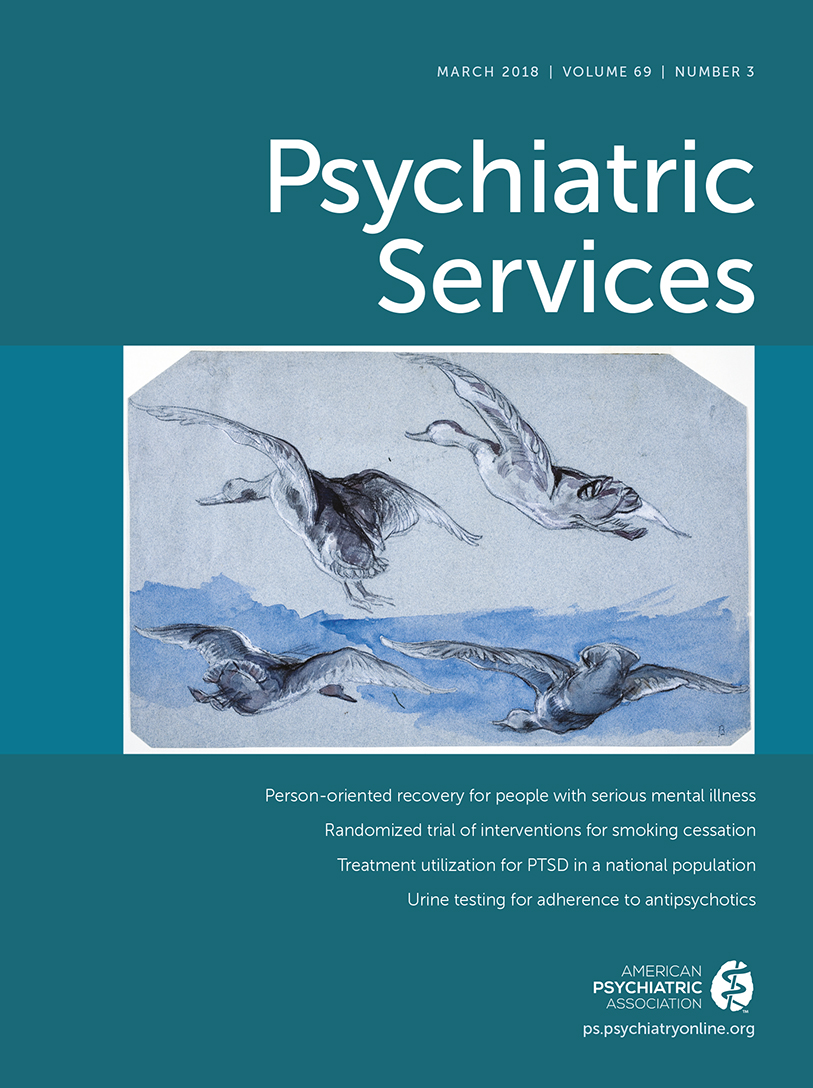Limiting Prescriptions (and Clinicians) as Systems Grow
In this issue of Psychiatric Services, Pennap and colleagues provide new analyses of Medicaid claims data from psychotropic pharmacy prescriptions for children. Specifically, the authors examine a phased implementation of a peer review process, conducted by academic pharmacists and associated clinicians in a Mid-Atlantic state, for prescriptions of antipsychotic drugs for children. Like almost every study of this type of peer review in pediatrics—for antibiotics or antipsychotics or other drugs—the added review decreased the number of prescriptions (antipsychotics) written for children. Implementation produced a larger reduction in prescriptions (30% on average) compared with results of some studies, but the reduction was similar to findings in a few recent analyses. A welcome addition to these studies is that Pennap and colleagues examined trends in prescribing of other psychotropic drugs as a balancing measure and report that, except for alpha-agonists in the youngest age group, the frequency of other drug prescriptions did not increase.
There are design issues with which one could quibble or that could lead one to momentarily pause in considering the results. These range from assumptions about consistent implementation at all prescription reviewing sites, whether the pharmacists involved can maintain implementation over time, whether diagnostic conditions are appropriately classified, and how inpatient drug prescriptions were handled. However, there is little reason to doubt that aggressively implemented peer review and authorization programs reduce pediatric antipsychotic prescribing, as these authors and others have found. In addition, we should celebrate that reduced prescribing is likely to reduce not only the costs that accrue to the health care systems and families, but also the inappropriate prescribing and associated harms for children.
Still, there are even more important questions to ask in the face of the rapidly expanding number of prescriber “management tools,” including peer review and prior authorization. The first and most important is why antipsychotics specifically, and psychiatric medications generally, are so often prescribed to children by clinicians when so many guidelines, recommendations, policies, and articles suggest that nonmedication solutions be tried first. The few behavioral and psychotherapeutic interventions we have are underfunded, frequently implemented poorly, not available in many communities, culturally challenging for many families, and too demanding for low-income families to participate in on a regular basis. It should not be surprising that frustrated clinicians resort to psychotropic drugs for children who are seen as disruptive in school, at home, in foster care, or in custody. The lack of viable nondrug alternatives will continue to press families and physicians for “quick pill” solutions that are covered by insurance, readily available, and less taxing on all parties.
If we do not solve the first problem, we will add to the growing pressures on our clinicians. The growth in systems engineering solutions for managing clinician behavior related to prescriptions is only accelerating. An increasing number of diagnostic algorithms use artificial intelligence to provide clinicians a likely diagnosis. Prespecified order sets and best-practice alerts in electronic health records guide the patient workup and treatment plan. Prior authorization and peer review correct a growing number of decisions outside the specific encounter, and after-the-fact clinician feedback and profiling information with incentives further sculpt clinician practice on the back end. Such system-level work to manage prescriber behavior is the inevitable chain encircling prescribing clinicians, shown to be necessary, but nonetheless highly constraining for previously independent clinicians.
Of course, health care clinicians are not the first professionals to have their autonomy so constrained. One need only observe the earlier transitions in banking, accounting, travel, tax preparation, and other service industries to see that automation, systems engineering, and management of large data sets decrease errors, reduce the costs of routine interactions, increase consolidation, and decrease individual autonomy of professionals. Still, the best services in each of these areas maintain a high level of human interaction, and medicine will be no exception.
At a time when more children than ever are being assessed for behavioral problems, when foster care placements are rapidly expanding, and when antipsychotic drugs are the most expensive drugs in public systems, systemwide tools to manage prescribing are essential to efficiently use resources and reduce unintended harm. Pennap and colleagues find that peer review can decrease prescribing of antipsychotic drugs for children. Our next steps must focus not just on ratcheting down prescribing but also on increasing access to and affordability and acceptability of alternatives to antipsychotic drugs for child behavioral concerns. If we don’t find a way to provide alternatives to antipsychotic prescribing for families and clinicians, the health care system will apply more pressure in reducing clinician autonomy around prescribing and practices, which will increase clinician discontent and exacerbate access problems.



